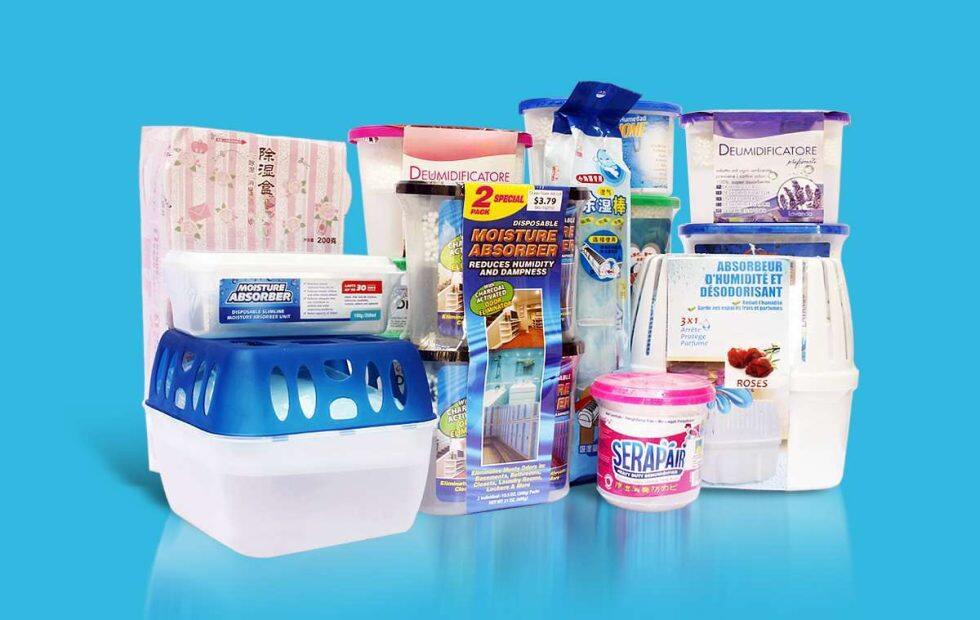Dehumidifier Box
$: Free Samples, Price upon Request
Specification: 300ml-1000ml / Customizable
Type: Charcoal-added, Scented, Unscented
Latest Articles:
How to Select Packaging Materials for Desiccants?
Desiccant packaging materials come in a wide variety, each differing in strength, breathability, heat-sealing capability, dust resistance, temperature tolerance, and cost. When making a selection, in addition to ensuring effective moisture protection and content safety, it is important to consider factors such as specific application scenarios, environmental requirements, and budget constraints.
Causes and Solutions for Mold Spots on Electroplated Parts
Through extensive research and analysis, we have identified two primary causes of mold spots on electroplated parts: irregularities during the electroplating process (production stage) and improper handling during transportation and storage (logistics and storage stage).
Why Must Only 3A Molecular Sieve Desiccants Be Used in Insulated Glass?
For insulated glass, because it requires the absorption of moisture, only water molecules can enter its channels, while other molecules in the air are blocked. Water molecules measure 2.8 angstroms (1 micrometer = 10,000 angstroms), while nitrogen, oxygen, and argon in the air are approximately 4 angstroms in size. Currently, only 3A molecular sieves are the most suitable, and no other types of molecular sieves are appropriate.
What is the Difference Between Montmorillonite Desiccants and the Montmorillonite Used in Pharmaceutical and Cosmetic Industries?
In industries such as pharmaceuticals and cosmetics, the purity requirements for montmorillonite are very high (above 98%), which is closer to the definition of montmorillonite in the scientific research field. In the non-metallic mineral industry (such as the desiccant industry), bentonite with a montmorillonite content greater than 80% is generally referred to as montmorillonite, such as what we commonly call “montmorillonite desiccant.”
Four Common Yet Incorrect Methods for Testing Moisture Absorption Rate of Desiccants
Incorrect Method 1: Throw it directly into liquid water and check after a few hours to see if it has become “fully saturated”. Incorrect Method 2: Take the sample and pour water directly onto it to observe whether it absorbs water quickly. Incorrect Method 3: Open the outer packaging of the desiccant and test only the raw material (granules or powder) inside. Incorrect Method 4: Place the desiccant directly in an indoor environment for testing.
What Type of Container Desiccants Can Meet the Needs of Sea Cargo Shipping?
Calcium chloride or magnesium chloride-based container desiccants feature high moisture absorption capacity, fast absorption speed, long-lasting effectiveness, a wide working temperature range, leakage-free performance, resistance to breakage, and compliance with environmental requirements, meeting all the demands for cargo during sea transportation.
Recent Q&A:
Question: Why Does the Water in My Dehumidifier Box Turn Yellow After Absorbing Moisture?
Answer: The yellowish color of the solution you observed is a typical characteristic of calcium chloride-based desiccants and does not indicate a quality issue. The light yellow appearance of the calcium chloride solution is primarily related to the following factors: natural mineral components, specific production processes, and its reaction with water.
Question: At what level of oil content in food is it appropriate to use triple-protection oxygen absorbers?
Answer: The core scenarios mandating the use of the triple-protection type are: 1. High-oil or high-moisture foods, and 2. Direct contact with food during application. Conventional high-efficiency oxygen absorbers may only be used when they are physically separated from the food (e.g., by internal packaging inserts) and it is confirmed that there is no risk of contact with oil or moisture.
Question: Is My Dehumidifier Bag Defective? Why Does the Collected Water “Freeze”?
Answer: When anhydrous or dihydrate calcium chloride in dehumidifier bags/boxes absorbs moisture, it first dissolves into a saturated solution that flows into the collection area. If the ambient temperature drops below the solution’s saturation point, the solution becomes supersaturated, causing calcium chloride hexahydrate crystals to form—visually resembling “ice.” Additionally, in low-humidity environments with insufficient moisture absorption, calcium chloride may directly crystallize as hexahydrate.
Question: What are the differences between your calcium chloride desiccants and SUPER DRY Desiccants?
Answer: SUPER DRY is an international company with foreign investment background and extensive industry experience, while CHUNWANG is a domestic enterprise listed on the New Third Board (Stock Code: 831880), possessing large-scale production facilities and a comprehensive quality control system. Both are leading and reputable manufacturers in the desiccant industry, with production capacity and quality stability validated by the market.
Question: What is the service life or shelf life of desiccants?
Answer: 1.Unused state (inventory storage): The quality assurance period for desiccants is typically one year. 2.In-use state (placed inside packaging): The actual effective protection duration (i.e., the time until moisture absorption saturation is reached) is not a fixed value but highly depends on the temperature and humidity of the usage environment, as well as the overall sealing performance of the packaging.
Question: How Should Used Desiccants Be Disposed Of?
Answer: Used desiccant is typically non-toxic and harmless, and in most cases, can be disposed of as general waste. Within the European Union, the disposal of desiccant waste must comply with relevant regulations, particularly EU Directive 91/689/EEC (on hazardous waste) and the implementation measures of its member states.
